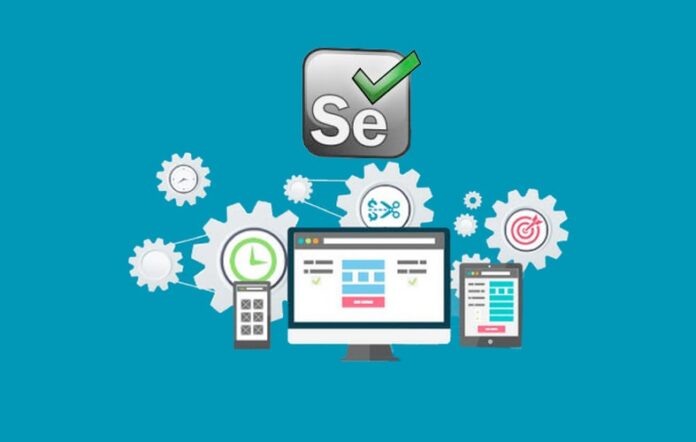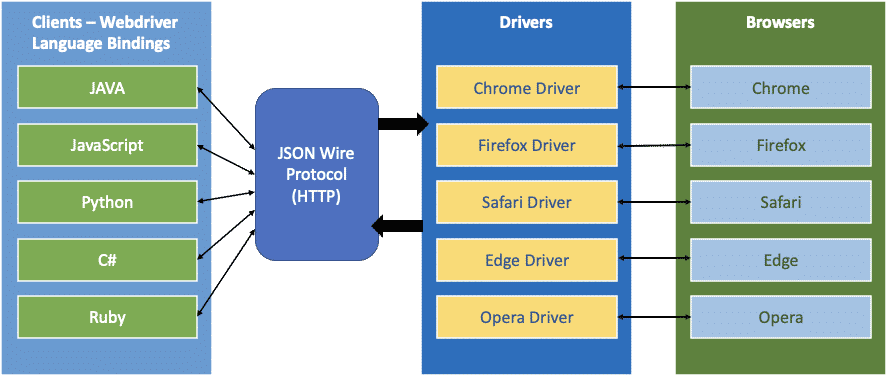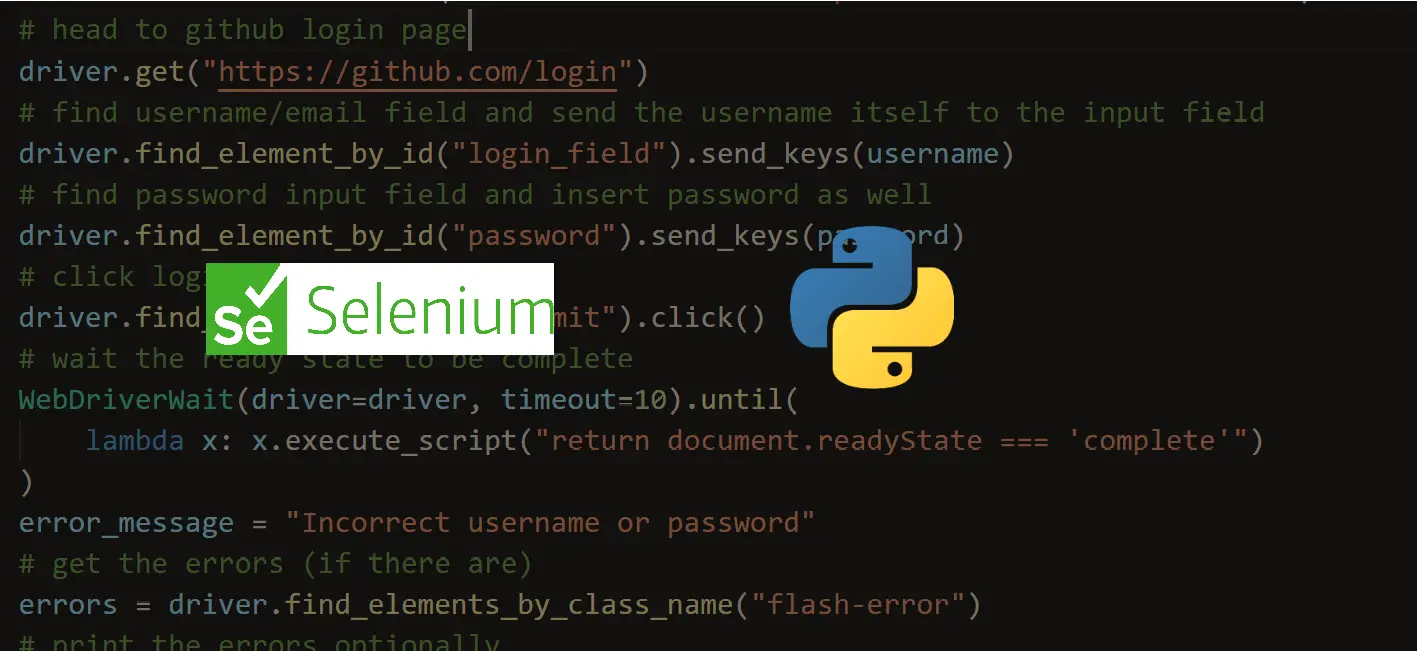Nowadays, almost all companies provide their product and services online to their clients, whether through their websites, software solutions, mobile applications, or various other means. Automation testing is the secret to ensuring that such organizations continue to succeed and that their product and services deliver desired outcomes and a satisfying client experience.
With the help of Selenium testing, you can solve any underlying flaws with the UI or UX design, compatibility problems, security issues, performance issues, and website functioning. Let’s start this blog article by learning about Selenium webdriver and its components.

Selenium WebDriver: What is it?
The basic elements of a website are called web components, and they can be anything from text boxes to checkboxes to buttons and many other things. Web automation testing includes automating the procedures that must be performed on various web components. Frequently used for automating tasks related to evaluating the user interface of websites, the Selenium WebDriver framework is a well-known web-based automation testing tool.
Selenium WebDriver does not directly interact with the individual web components that make up a page. Selenium WebDriver is used to simplify communication between the test script and the web browser. It is the main element facilitating communication with the web browser. Selenium locators are used to locate objects on the page and ensure the appropriate techniques are applied to deal with the object in question.
Selenium WebDriver supports many popular programming languages, including Ruby, Python, C#, Java, and others. Software testers and developers utilize this program.
Mozilla Firefox is the web browser that Selenium WebDriver uses by default.
Selenium WebDriver Architecture
It’s important to fully grasp how different Selenium blocks communicate before moving ahead to Python. Programming languages and web browsers can communicate with one another thanks to the Application Programming Interfaces (APIs) offered by Selenium WebDriver.
The several building blocks that make up the Selenium WebDriver architecture are composed of the following elements:
- Selenium Client Libraries
- Browser Drivers
- JSON Wire Protocol
- Browser
Let’s examine each of these elements in detail:

-
Selenium Client Libraries
As mentioned, programmers can use Selenium to automate testing with various popular programming languages. Using either Selenium Client Libraries or Selenium Language Bindings enables Selenium to handle several languages.
-
Browser drivers
The main role of the browser drivers is to facilitate communication between each web browser and the drivers. Every browser has a unique browser driver, which must be installed on the target computer for automation testing.
The fundamental workings of the web browser are hidden since communication with it happens through the browser driver. The inclusion of the browser driver provides a much-needed level for abstraction to the interface with the browser.
When the browser driver receives a command (or request), it sends it to the appropriate browser for execution. The browser’s response, produced during execution, is then provided to the web driver as an HTTP response.
-
The JSON Wire Protocol
The JSON Wire Protocol sends data across the internet from the server to the client. This Representational State communication, or REST, API facilitates communication between the HTTP Server.
Every online browser, including Chrome, Internet Explorer, Firefox, and others, has a unique browser driver.
-
Browsers
Selenium can be used with numerous popular web browsers, including Firefox, Chrome, Internet Explorer, and Microsoft Edge. The framework cannot be used with browsers because the corresponding drivers are unavailable.

Selenium Tools Suite
The Selenium IDE, RC, and Grid were all included in the first Selenium release. Version 3.141.59 of Selenium is the most recent stable release, and version 4.0.0-alpha-6 of Selenium 4 is the most recent alpha release. All Selenium Client Libraries and Selenium 4 are completely compatible.
Selenium v2 introduced Selenium WebDriver, whereas the Selenium RC’s support ended with Selenium 3. Because of the more complex architecture of Selenium RC was not performing well.
The elements that Selenium Suite are listed below:
- Selenium Integrated Development Environment (IDE)
- Selenium Remote Control (RC)
- Selenium Grid
- Selenium WebDriver
Let’s examine each of these elements in detail in this section:
1. Selenium IDE:
The Selenium IDE tool is frequently used for playback and recording testing. Selenium IDE was previously only available as a Firefox plugin, but as of right now, Chrome users may also download it as an extension.
If you use the most recent Selenium IDE version, which comes with the SIDE Runner command-line tool, you can run your side project on a Node.js platform. Selenium WebDriver must be installed to use Selenium IDE to create test scripts.
2. Selenium WebDriver
Selenium WebDriver is an automated testing framework that assists in validating web pages and other online applications. Numerous popular programming languages, such as Python, C#, Java, Ruby, and others are compatible with it.
The Selenium WebDriver was first made accessible in version 2 of Selenium. It does not need a component like Selenium RC Server, as it connects with a web browser by using the browser driver that matches the browser.
3. Selenium Grid
You may run tests simultaneously across various browsers, operating systems, and device settings with Selenium Grid. Since tests can be run simultaneously against various browser and operating system combinations when using a Selenium Grid, parallel test execution is possible.
A Hub and Node model is the architecture that Selenium Grid uses, in which the Hub acts as the master and one or more Nodes act as its slaves. Selenium Grid 4 supports all three operating modes: Fully Distributed Mode, Standalone Mode, and the more traditional Hub & Node Mode. This version of the software is still under Alpha development.
LambdaTest is a digital experience testing platform in test orchestration and execution. It allows developers and QA engineers to run manual and automated testing for mobile and web apps for more than 3000+ different operating systems, real devices and browsers. Some of its key features are listed below:

Features:
- It allows the user to perform testing on a real device cloud.
- The testers can run Appium, Playwright, Puppeteer, Cypress and Selenium automation tests on 3000+ real mobile and desktop environments.
- It can accelerate testing; job times get shortened, and feedback is faster.
- Local testing for mobile and web apps.
- Smart visual regression testing is available on the cloud.
- Automated screenshot testing in a single click for multiple browsers
Here, we have listed some additional features you can explore. Access the platform to discover more about Selenium Python testing.
Python
Python is a well-known programming language and is quite popular in the testing world. It is one of the languages most frequently preferred for projects needing Artificial Intelligence (AI) Machine Learning (ML), and other related subjects. The Selenium and Python combination is the one that enjoys the most support from the general public when it comes to website automation.
Selenium Python Bindings
The Selenium Python bindings provide application programming interfaces (APIs) to enable the creation of functional tests using the Selenium WebDriver. Selenium Python APIs may be used to create tests that let you interact with the WebElements on the AUT (application under test), just like other Selenium language bindings can be used to create extremely effective tests.
With the help of the bindings, you may connect to a remote cloud Selenium Grid and use local browser driver implementations for Firefox, Chrome, Internet Explorer, and other browsers. The bindings also assist local browser drivers.

Why Should You Use Python Selenium?
Selenium offers a test-domain-specific language called Selenese. It also works with various programming languages, including Python, C#, Java, JavaScript, Ruby, and R.
Here are the key reasons why you should use Selenium with Python:
- Comparatively speaking, it requires a lot less code than other programming languages.
- Because of the Python English-syntax, everyone can understand it. Additionally, its syntax is simpler to comprehend, making it easy to pick up and learn.
- Python is an example of an open-source, cost-free programming language. Additionally, it has many libraries and frameworks.
Why should Selenium be your tool of choice over other options?
Every tool adds something unique to the experience as a whole. Whether working alone or with others, understanding the group’s goals is crucial for determining the best tool choice.
Selenium is the most well-liked and in-demand option for automating web application testing compared to other testing technologies. Here are the reasons why you can choose Selenium over any other option for automation testing:
Optimal framework to perform task correctly
Selenium is an excellent framework for automating web application testing and testing the entire workflow of the apps. It only functions with web browsers and is incompatible with desktop applications. Both mobile and desktop application testing is not supported on this platform. Major corporations like Netflix, Google, and Fitbit, among others, use it for testing because of its seamless interface.
Open-source
As Selenium is open-source software (OSS), using it gives you access to the complete user community and the product. There are many Selenium Developers there who are willing to help anyone who asks for it. In the community, people frequently contribute solutions to the most challenging problems they have faced, so keep looking for them.
Flexibility
Selenium has a remarkable capacity for adaptation, as it can run on the majority of browsers and operating systems. It can also test browsers on iOS and Android devices.

Conclusion
Selenium WebDriver is a tool widely used for automating testing because it is open-source and supports popular programming languages like Python, C#, Java, and others. Application of the appropriate browser drivers enables interaction with the browser that must be used for automated testing. This increases the level of abstraction of the interaction with the web browser.
Existing Python-based Selenium implementations can be readily modified to work with a remote cloud-based Selenium Grid with just a few small adjustments. By performing testing on a Selenium Grid that is hosted in the cloud, test automation can be accelerated.





![Calgary’s Hottest Neighborhoods for Luxury Homebuyers [2024]](https://thewashingtonote.com/wp-content/uploads/2024/04/Calgary-324x160.png)



